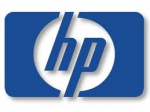 Intel Corporation today announced an agreement with the Trump Administration to support the continued expansion of American technology and manufacturing leadership. Under the terms of agreement, the United States government will make a $8.9 billion investment in Intel common stock, reflecting the confidence the Administration has in Intel to advance key national priorities and the critically important role the company plays in expanding the domestic semiconductor industry.
Intel Corporation today announced an agreement with the Trump Administration to support the continued expansion of American technology and manufacturing leadership. Under the terms of agreement, the United States government will make a $8.9 billion investment in Intel common stock, reflecting the confidence the Administration has in Intel to advance key national priorities and the critically important role the company plays in expanding the domestic semiconductor industry.
The government’s equity stake will be funded by the remaining $5.7 billion in grants previously awarded, but not yet paid, to Intel under the U.S. CHIPS and Science Act and $3.2 billion awarded to the company as part of the Secure Enclave program. Intel will continue to deliver on its Secure Enclave obligations and reaffirmed its commitment to delivering trusted and secure semiconductors to the U.S. Department of Defense. The $8.9 billion investment is in addition to the $2.2 billion in CHIPS grants Intel has received to date, making for a total investment of $11.1 billion.
Techmeme reported: Intel officially announced an agreement with President Donald Trump’s administration on Friday afternoon, following Trump’s statement that the government would be taking a 10% stake in the in the struggling chipmaker.
While Intel says the government is making a “$8.9 billion investment in Intel common stock,” the administration does not appear to be committing new funds. Instead, it’s simply making good on what Intel described as “grants previously awarded, but not yet paid, to Intel.”
Specifically, the $8.9 billion is supposed to come from $5.7 billion also awarded-but-not-paid to Intel under Biden administration’s CHIPS Act, as well as $3.2 billion also awarded by the Biden administration through the Science Enclave program.
In a post on his social network Truth Social, Trump wrote, “The United States paid nothing for these shares.” Nonetheless, he descried this as “a great Deal for American and, also, a great Deal for INTEL.”
According to The New York Times, some bankers and lawyers believe the CHIPS Act may not allow the government to convert it’s grants to equity opening this deal to potential legal challenges.
The Verge reported: The US is investing $8.9 billion into Intel, but most of the funds come from money that the government was supposed to pay the embattled chipmaker anyway. In an announcement on Friday, Intel said the federal government will fund its investment using the remaining $5.7 billion in grants it hasn’t received under the Biden administration’s CHIPS Act, in addition to the $3.2 billion received as part of the Secure Enclave program.
The government’s investment in intel “will be a passive ownership, with no Board representation or other governance or information rights, according to Intel. “We are grateful for the confidence the President and the Administration have placed in Intel, and we look forward to working to advance U.S. technology and manufacturing leadership,”
The confirmation of the deal comes just days after the embattled chipmaker marks yet another move that blurs the line between garment and business, as reports suggest that the Trump administration has demand that Nvidia and AMD give the government a 15 percent cut of chip sales to China.

 Intel will receive $8.5 billion in direct funding and $11 billion in loans from the US government to expand its capacity to make high-end chips, as it seeks to reinvent itself as a national champion in the sector and compete with the likes of Taiwan’s TSMC and South Korea’s Samsung,
Intel will receive $8.5 billion in direct funding and $11 billion in loans from the US government to expand its capacity to make high-end chips, as it seeks to reinvent itself as a national champion in the sector and compete with the likes of Taiwan’s TSMC and South Korea’s Samsung,  In a world where computing is pervasive and intelligence is distributed across every surface – from the cloud to the network to the intelligent edge –
In a world where computing is pervasive and intelligence is distributed across every surface – from the cloud to the network to the intelligent edge –  Those of us who have dreamed about having our very own robot probably didn’t imagine that it would roll along like a Segway.
Those of us who have dreamed about having our very own robot probably didn’t imagine that it would roll along like a Segway. 

